Among the more than four hundred works that give body to The Milk of Dreams, the international exhibition of the 59th edition of the Venice Biennale, there is one that sums up all its contradictions: one encounters it shortly after the halfway point at the Arsenale; it is a sculptural group by the young German artist Raphaela Vogel entitled Können und Müssen and depicts an enormous penis, disfigured by various afflictions (a series of plaques affixed to the huge member identifies them all one by one), and pulled on a poor steel chariot by five pairs of giraffes. The catalog makes us aware of the fact that the mighty bruised rod is pulled by the giraffes “with arrogance, as if it were an aristocratic nobleman or the member of an imaginary royal family” (note the masterpiece of unintentional comedy by the person who translated the card compiled by Maria Wills), and that “by placing itself in the domain of the fantastic, the humor of Vogel’s composition proposes another effect: in the artist’s vision, the fragmented body experiences its own experiences.” The work would ironically like to refer to the main un-können of the male sex organ, erectile dysfunction, probably to emphasize the distance between ability and necessity or who knows what else (it is indeed a work that leaves room for interpretation, it must be acknowledged), but what is most striking are the sixteenth-century reminiscences that this image recalls: it is curious to recall how the first colossal mace dragged in procession originated from an invention by Francesco Salviati, whose original drawing we have lost, but which we know because the image was handed down to us by an 18th-century engraver.
According to the curator Cecilia Alemani’s programmatic statements, The Milk of Dreams intends to present to our attention “worlds made of new alliances between different species and inhabited by permeable, hybrid and multiple beings,” to oppose “the Renaissance and Enlightenment idea of modern Man, in particular the male, white and European subject as the immobile fulcrum of the universe and the measure of all things.” We have already discussed, on these pages, the facile nature of this way of approaching a subject that, in its relation to the Renaissance, would have deserved less superficiality, and in this sense Salviati’s triumph of the phallus provides further confirmation: how much more modern and more original that image was, compared to Raphaela Vogel’s drab procession! At the time, drawing a mammoth belino carried in triumph like an emperor (and moreover, as limp as Vogel’s: the motivations are probably the same), as goliardic as the idea was, also meant, to some extent, making fun of a ruling class that based its prestige on the seriousness of such images (think of Mantegna’s Triumphs of Caesar ); it meant mocking the artistic conventions of the time and those who exploited them to be celebrated; it also meant lashing out at colleagues and intellectuals prone to power. On the contrary, the young German’s work, in addition to taking itself very seriously (the catalog of her first exhibition abounded with the usual quotes to Deleuze and Guattari, now good for everything), is entirely functional in comforting the vision that informs The Milk of Dreams. Salviati’s Triumph of the Phallus was an anti-establishment work, Können und Müssen settles into the more comfortable comfort zones of the political correctness that imbues this Biennale. Salviati’s Triumph of the Phallus circulated through sheltered and private ways (so much so that today the original did not even make it there), Können und M üssen is in the most central zone of the world’s most institutional exhibition venue. Salviati challenged, Vogel merely commented. Salviati slapped down, Vogel aligns herself, neatly, with the moralism of Cecilia Alemani’s Biennale.
Of course, it would be ludicrous, or at least naive, to assume that a Venice Biennale should subvert: this is not the place. One need only ask Vadim Zakharov, the Russian artist who on the first day of the preview stood in front of the Russian pavilion protesting against his own country: he was immediately removed by the security service without much ado and without anyone uttering a word of defense, even a minimal and circumstantial one, in his regard. In other times, the artists in the exhibition would have turned the Biennale upside down. In any case, even if this is not the place to address uncomfortable issues, it is still to be expected that a Venice Biennale can anticipate or provide answers, instead of chasing or, as in the case of The Milk of Dreams, starting from a logic, simplistic and unstated, of settling scores against centuries of male-dominated art history. Yet, the very philosophical scaffolding that should support the exhibition would have offered insights on which to attempt an advance: in the 2017 essay Posthuman Critical Theory, translated into Italian in the exhibition’s catalog, a sort of update, if you will pardon the term, from the full-bodied and programmatic The Posthuman of 2013 (published in Italian only in 2020), Rosi Braidotti questions the construction of a posthuman “we” that takes into account how this same “we” is not a monolithic element, "in terms of positioning, power, responsibility, potestas and potentia,“ and that the construction of a transversal collectivity requires the ”formation of a new political subject, that is, the project of assembling a missing people.“ Braidotti sketches a response by imagining ”heterogeneous communities of humans and non-humans, allied on the basis of the recognition of mutual and reciprocal interdependence.“ This, summarizing and taking as a reference the words of the Italian-Australian philosopher that best delineate a perspective on which a dialogue with artworks could have been grafted, is perhaps the main problem on which the exhibition would have been called to reason. To fix through art the points of that ”new posthuman social agenda" that Braidotti talked about in his 2013 book. That is, to imagine and anticipate different thought patterns and mentalities, new and future ways of living according to perspectives that discard the centrality and universality of anthropocentric assumptions.

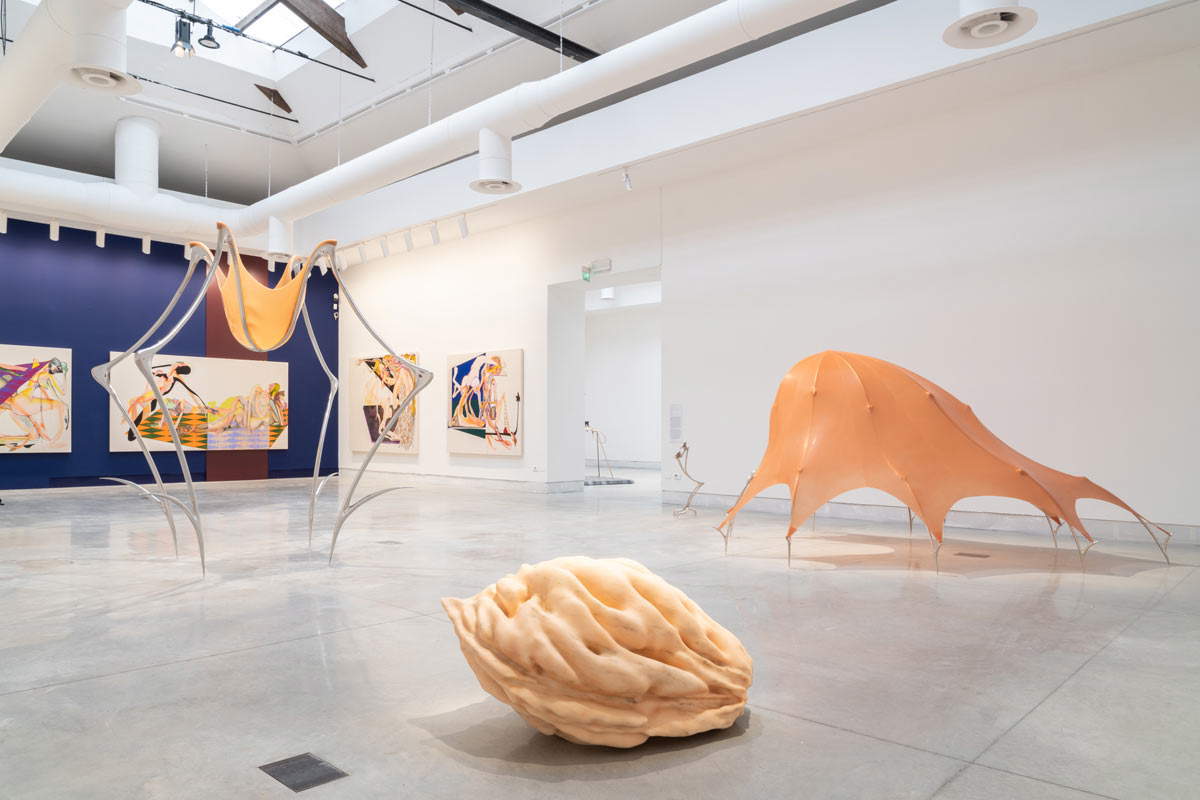

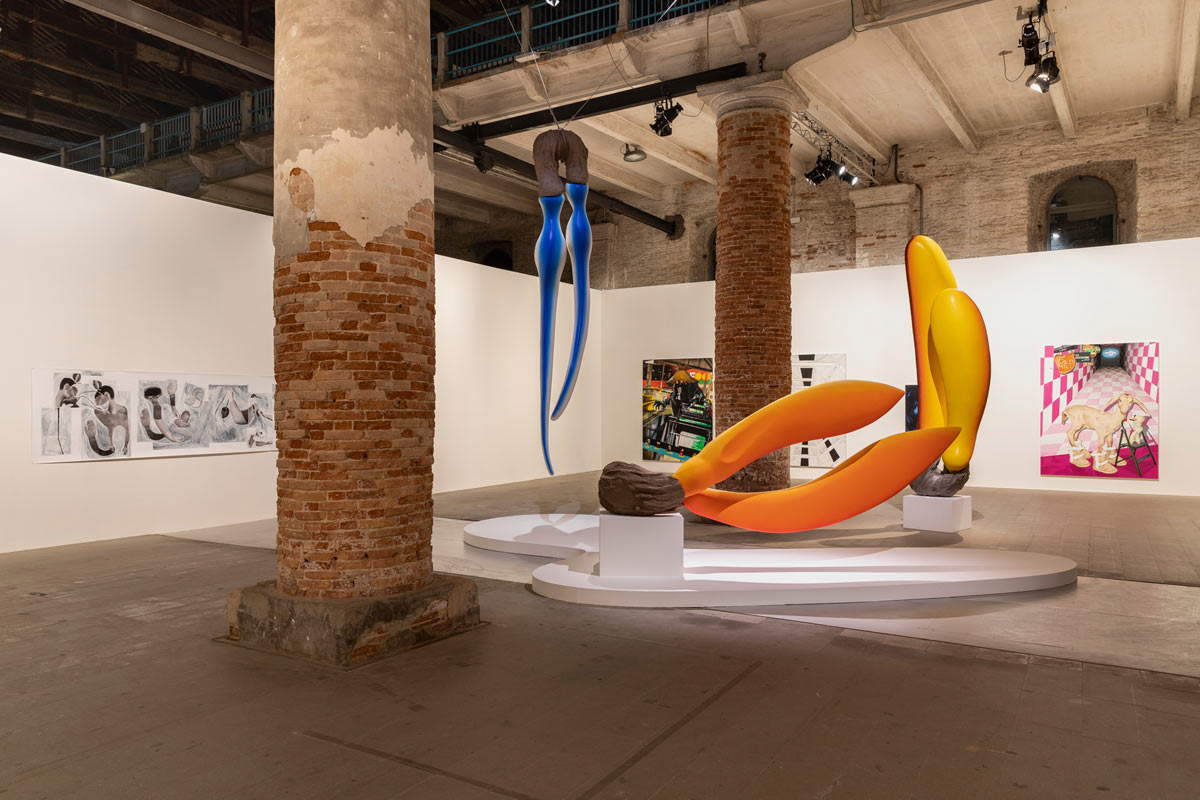

It would have been interesting, then, exactly ten years after the thirteenth Documenta, curated by Carolyn Christov-Bakargiev, which had already attempted an enfranchisement of anthropocentrism in favor of a perspective that included what the curator called the “inanimate creators of the world” (and in a way that was even much more provocative than this year’s edition of the Biennale, especially when one considers the fact that Christov-Bakargiev was questioning the potential political intentions of a strawberry: it was a way of trying to reconfigure inanimate objects as part of our social lives), that The Milk of Dreams had resolved itself into a more extended reflection on the present rather than a grand rereading of the past with some projection onto the contemporary. Interestingly, living artists comprise just over half of those in the exhibition, and historical works have often been brought in for artists still among us. Katharina Fritsch’s scenic elephant in the Giardini opening is striking, but thirty-five years later does it still embody such an urgent relevance that it should almost be elected as a manifesto? What does it have to say about the contents of the exhibition, except that the elephant is an animal with a matriarchal social organization and thus simply becomes the symbol of an exhibition that, of 213 artists, has 191 women? Not to go too far in a hypothetical cartography of the themes of which the exhibition speaks, today the animals of Bertozzi&Casoni seem decidedly more eloquent and urgent, just to advance the first example that jumps to mind. And who do Rosemarie Trockel’s knitted paintings, which the audience encounters immediately after Fritsch’s beast, provoke more these days? What do the tons of outsider art that rages in every hall and has long colonized fairs halfway around the world every year add or say differently? What is the point of a feminist reinterpretation of surrealism? Alemani writes in her only contribution in the catalog (an interview) that, beyond her personal interest, it is “stimulating to note how in recent years the historiography of Surrealism has shed new light on the role of women and sexuality within avant-garde movements.” certainly, if one considers “the last few years” as a time frame starting in the 1980s then the observation is pertinent, but there remains doubt about this decontextualized and delayed revisiting compared to the long-standing achievements of scholars such as Whitney Chadwick (who began studying Surrealism in women in the 1980s), Penelope Rosemont, Gwen Raaberg, Mary Ann Caws. Was there really a need for the Venice Biennale to meet Leonora Carrington, Remedios Varo or Leonor Fini?
There is only one art historian, moreover trained in Latin American art history, in the vast and composite team that flanked Cecilia Alemani in ordering the exhibition, and the results are there to be seen. The five small exhibitions pompously called “thematic capsules” aimed at enriching the Biennale “with a trans-historical and transversal approach that traces similarities and legacies between similar artistic methodologies and practices, even generations apart,” are actually five small disasters: ungainly jumbles devoted to the accumulation of material often of less than excellent quality, presented without semblance of linearity, naïve and superficial in their premises and conclusions. The first of the capsules, The Witch’s Cradle, the one where Leonora Carrington’s works are encountered, starts from the idea that the women artists put together in the showcases made by Formafantasma “adopt the themes of metamorphosis, ambiguity and fragmentation to counter the myth of the Cartesian unitary and de facto masculine self, decisively rejecting the Renaissance idea of Man as the center of the world and the measure of all things.” It takes a good deal of trivialization to arrive at such granitic assertions, at such a Manichean view of a history that is actually far more nuanced: it will be enough to think that the art of Leonora Carrington, who is also the patron deity of the exhibition, would be unthinkable without the artist’s expressly stated infatuation with the paintings of Paolo Uccello and Arcimboldo admired in Italian museums; it will be enough to think that her color palette would have taken on different tones if the English painter had not kept in mind the Sienese of the 14th and 15th centuries, suffice it to think that a work like The Garden of Paracelsus would not have come into being without Carrington’s fascination with the Renaissance theory of the microcosm and, in general, without her sensing the profound complexity of a historical period that cannot be reduced to a slogan. We return, in short, to the point of departure: To the sense of revenge embodied by a vindictive and even rather manifest cancel culture, which cuts history with a stroke of the pen, which throws into the undifferentiated collection “the Renaissance and Enlightenment idea of Modern Man” without further specification (singular, moreover, that a stance against the Enlightenment arrives at a historical period in which even the most retrogressive and obtuse anti-scientific movements are claiming their space), as if there is a single idea of “Modern Man” that spans two centuries (the word “Renaissance,” with its derivatives, recurs only twelve times in the entire catalog, and most occurrences are concentrated in the descriptions of national pavilion designs that are inspired by artists of the 15th and 16th centuries), and as if each epoch is a concrete block where there is no room for tensions, divergences and other and conflicting thoughts. Even in the Renaissance, after all, there were artists and thinkers who envisioned a human condition subject to the laws of the cosmos and nature, and necessarily held to reckoning with the nonhuman.
And if one does not understand who the kinetic women artists are “largely marginalized by the male-dominated art circles of their time” (Grazia Varisco founder of Gruppo T? Lucia Di Luciano founder of Gruppo 63 and Operativo R? Marina Apollonio who frequented virtually all the circles of the time? Laura Grisi who at the age of twenty-five was exhibiting at Leo Castelli’s in New York and would shortly thereafter collect participations in Biennials and Quadrennials?), one can well sense the enormous contradiction between, on the one hand, a selection that took into account only women and, on the other, an art that did not care about such polarizations: “what interests the programmed,” Lea Vergine stated in the seminal 1973 lecture on kinetic art, “is to act within the operative process; to promote an interformative methodology; to organize linguistic elements without meaning other than that employed by their own structure; to make explicit the perceptual structures that support the images and the messages related to the images themselves; the relationships between primary (already existing) and constructed data; the work as a typological sample (in the sense of model, that is); the struggle against the commodification of art, moving its activity into a didactic dimension and in a more responsibly politicized direction.” These are issues that, of course, prescind from the attempt to circumscribe, sexualizing it, the field of action of those who worked in those years. The “capsules,” in short, somewhere between epitome and vindication, in their attempt to provide The Milk of Dreams with a “trans-historical” framework, reveal all the shortcomings of an exhibition that struggles to present itself with credibility in its art-historical component.
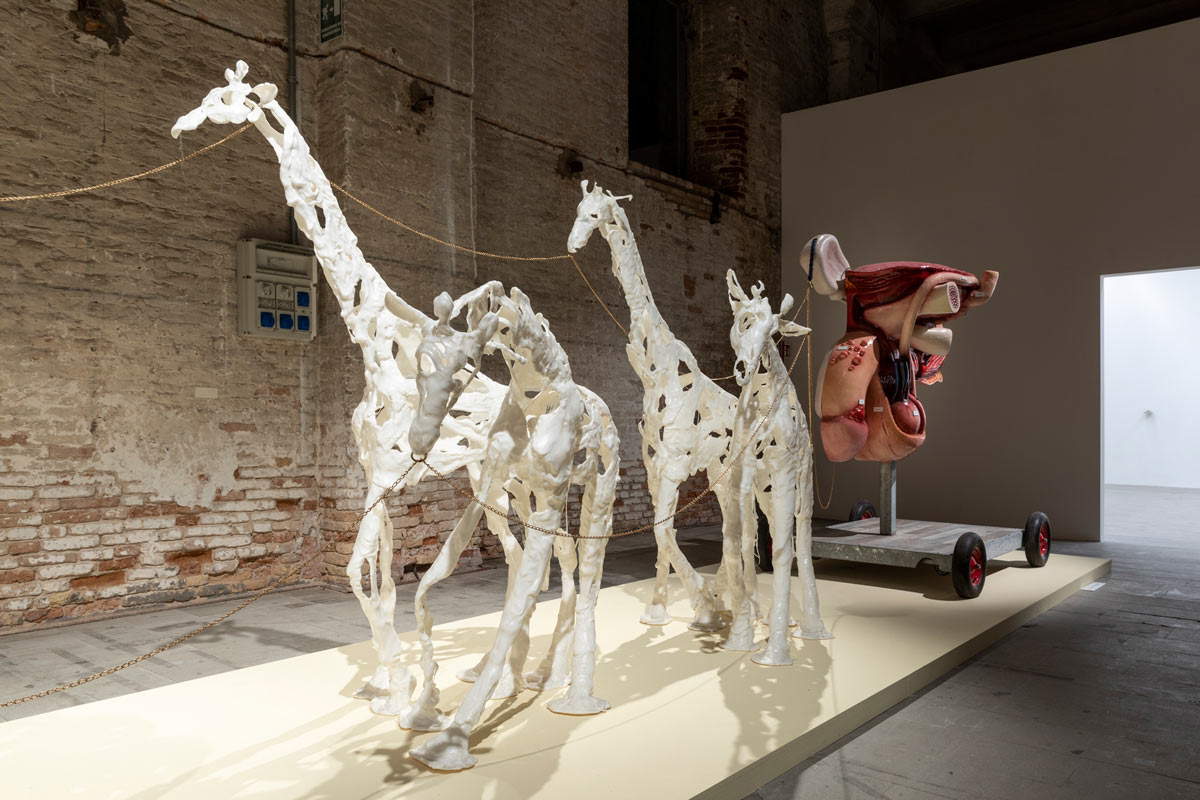



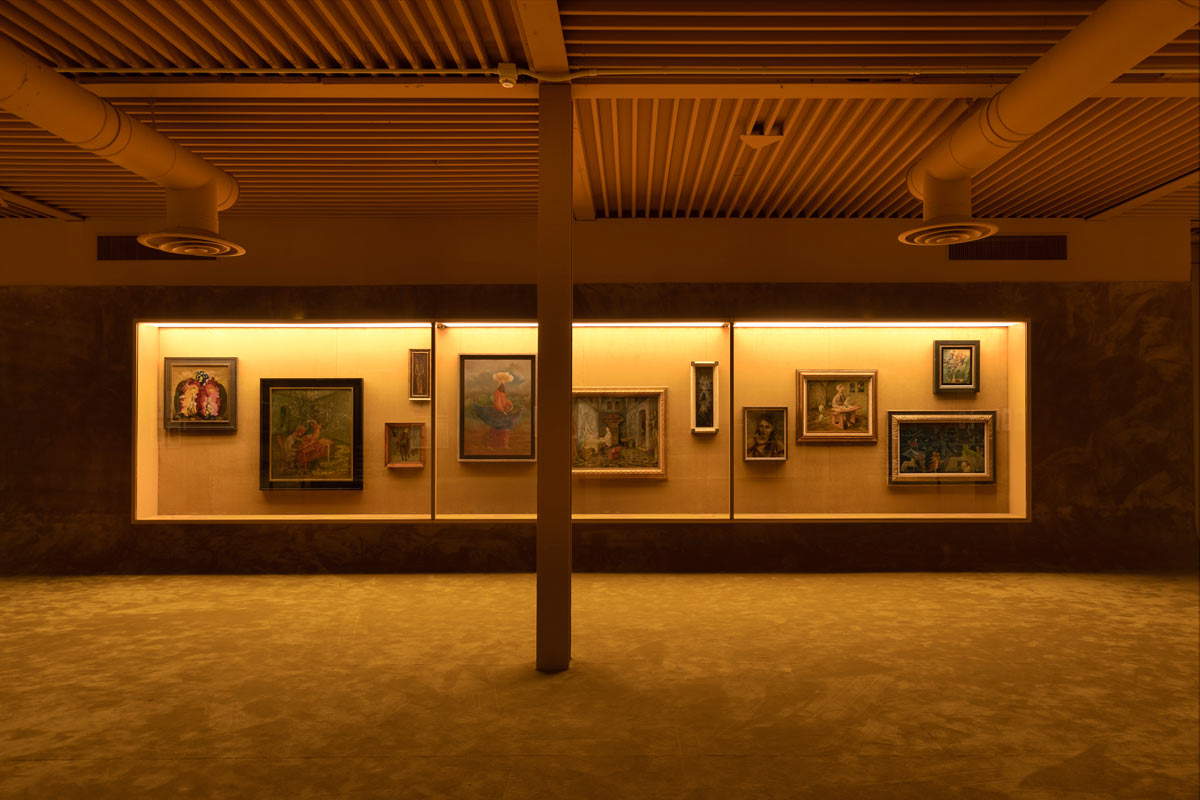
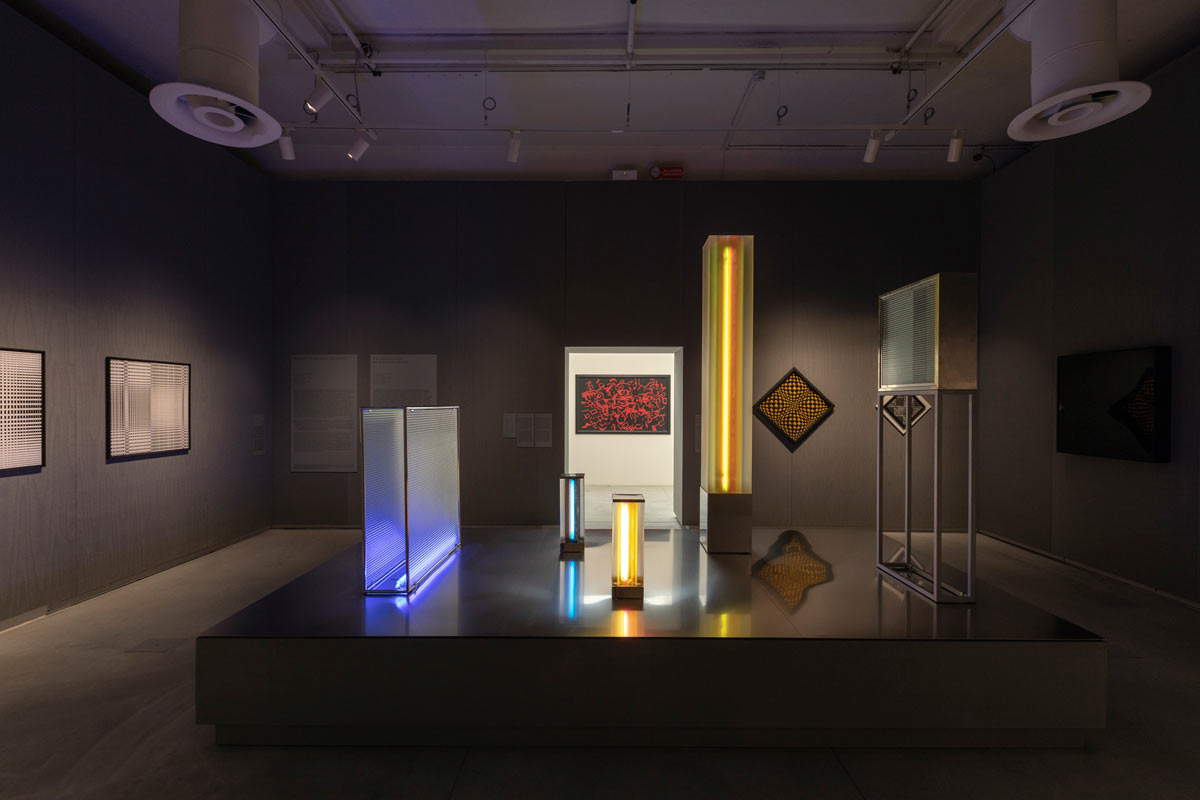
Paradoxically, the most powerful works in this Biennial seem to be those in which the condition of the human being is expressed in an intimate withdrawal, often with accents of disquiet, as is the case in Kaari Upson’s Portrait series, disfigured portraits that speak to the relative of the precariousness of life, or as is the case in Miriam Cahn’s water-swallowed bodies, exhibited not far away, where the tragedies of the world pass by “letting the most terrible atrocities” run through the artist’s psyche, “her hand and her canvas,” informs the card that accompanies the cycle unser süden. And again, the fragmented bodies of the young Venetian Chiara Enzo who is perhaps the true revelation of this Biennale and who, in small paintings with a hyperrealist intonation, portrays portions of the body that are wounded and stained but also wet or untouched, signifying that our skin is “limit and boundary,” “the physical space in which our interaction with the world begins and ends,” in a whole that expresses both intimacy and anxiety. In a Central Pavilion of the Giardini in which the main focus is on the body, the initial condition is clear: more confusing, however, is the approach to the evolution of the “definition of human” that is also one of the programmatic points of the review, because several are the questions left unanswered by a review that is based on the paradox of an overflowing redundancy that, however, touches on the surface without ever going down into the depths.
The discourse, at the Gardens, is about hybridization: and so, in an exhibition that lapses over and over without ever reaching a satisfactory conclusion, here is Cecilia Vicuña’s woman-leopard that rebels against the colonizers, here are Christina Quarles’ elusive beings that refuse all identification, here are Andrea Ursuta’s alien bodies that “progressively evolve into the technical components of a cyborg body in constant mutation” and thus invite the visitor to continue his or her journey at the Arsenale where the mingling of human and technological is at the center of reflection. However, not without making it clear, with the magniloquent introduction entrusted to Simone Leigh’s Brick House flanked by Belkis Ayón’s collographies (moreover, Leigh and Ayón’s works are among the best to be found in the exhibition), that this Biennale is meant to be, from beginning to end, a titanic, resipiscent, continuous amends, well-polarized as befits a product steeped in U.S.-branded political correctness, and that with an abundance of pleonasms makes clear what was already clear even in recent editions of the Venetian event, which has long offered the narratives that inform The Milk of Dreams, and in the past has done so even more urgently and pressingly. The exception is precisely the case of Simone Leigh (winner of the Golden Lion: symptomatic that she succeeds Arthur Jafa in the roll of honors, who works on the same themes, albeit from obviously different perspectives), who with her Brick House intervenes on the theme of public statuary by proposing an alternative monumentality, celebrating the black woman with a large bronze in a historical era in which public discussion of monuments has returned to pressing relevance.
The expectations placed on such a lofty introibo are, however, dashed by the continuation of the exhibition, in a roundup of postcolonialist rhetoric (such as Candice Lin’s), faux archaeology (Ali Cherri’s works that mimic Assyrian deities) of works that sometimes pertain more to craftsmanship than art (Magdalene Odundo’s vases), of déjà-vu manifestos (the very young Tau Lewis who offers works that are quite similar to Caroline Achaintre’s, but worse), and where the discourse on the transformations of the body continues, culminating in Marguerite Humeau’s sci-fi creatures, Zhenya Machneva’s machines on tapestry, Geumhyung Jeong’s robots, between optimistic visions of a technology that “promises the infinite refinement of the human body through science.” writes Alemani, and those, on the other hand, gloomy ones of a world in which machines will take over from human beings (the third pole is missing, perhaps the most urgent one, which questions how sustainable at these rates the technological world we have forged over the past decades is). Coming to the visitor’s rescue, among the scattered moments of freshness, are the paintings of Noah Davis, who died in 2015 at only thirty-two years old, works in which imagination bursts in to tenderly unhinge a monotonous quotidianity, the irony of Allison Katz’s Jamian Juliano-Villani’s “Photoshop of the poor” (as he calls his work) where a bitter nostalgia for what was and an omnivorous and information-laden present meet, Joanna Piotrowska’s photographs that show how vulnerable one can be even in the safety of a domestic environment. Also worthy of some note is Precious Okoyomon’s final landscape, whose installation To see the Earth before the end of the world builds a kind of setting for Ed Roberson’s poetic work from which he borrows the title, reminding us how there are no breaks between human beings and nature (without which we cannot exist), between the finite and the infinite, and how the earth is obviously capable of enduring far beyond human beings. Roberson’s collection of poems opens with a seemingly tragic image (“People are grabbing at the chance to see / The Earth before the end of the world, / The world’s death piece by piece each longer than we”), but the question the poet poses to the reader is a challenge: can we improve ourselves before it is too late? Okoyomon, in an installation that critically reinterprets the past (with plants of kudzu, a Japanese essence that was introduced to the United States in the late nineteenth century to prevent soil erosion, except that it later became a weed and thus harmful, and with sugarcane alluding to slavery), seems to give an answer, albeit a partial one: “a politics of revolt and ecological revolutions,” Wills writes.

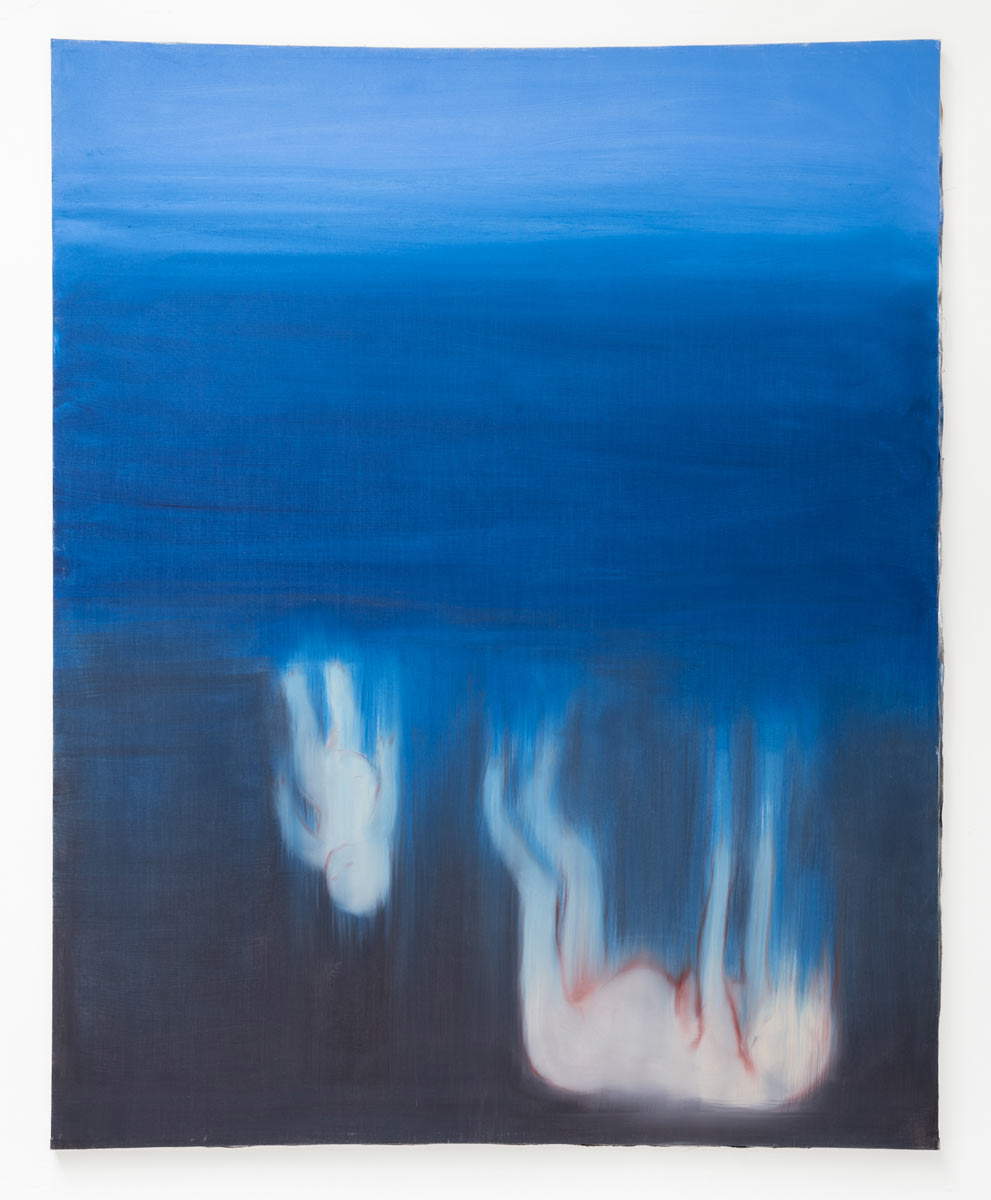
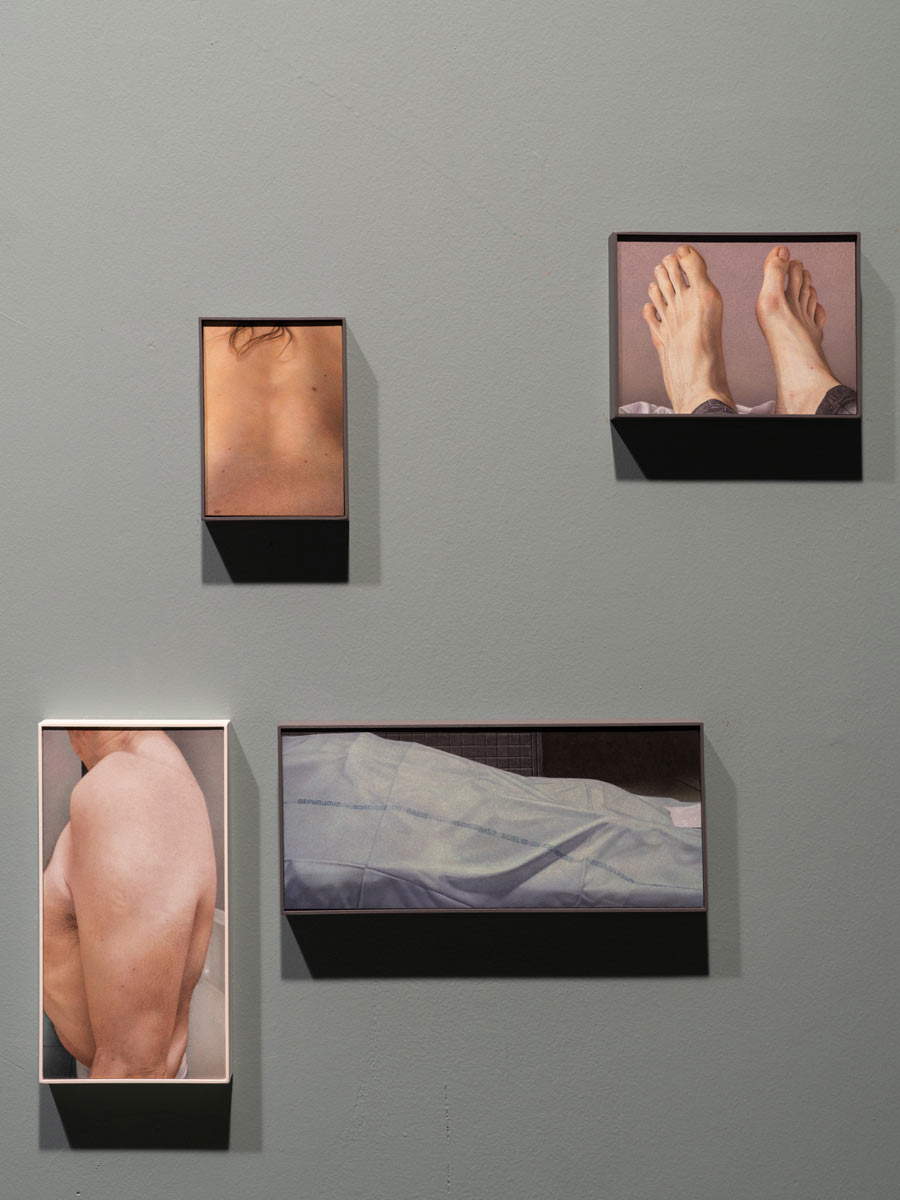
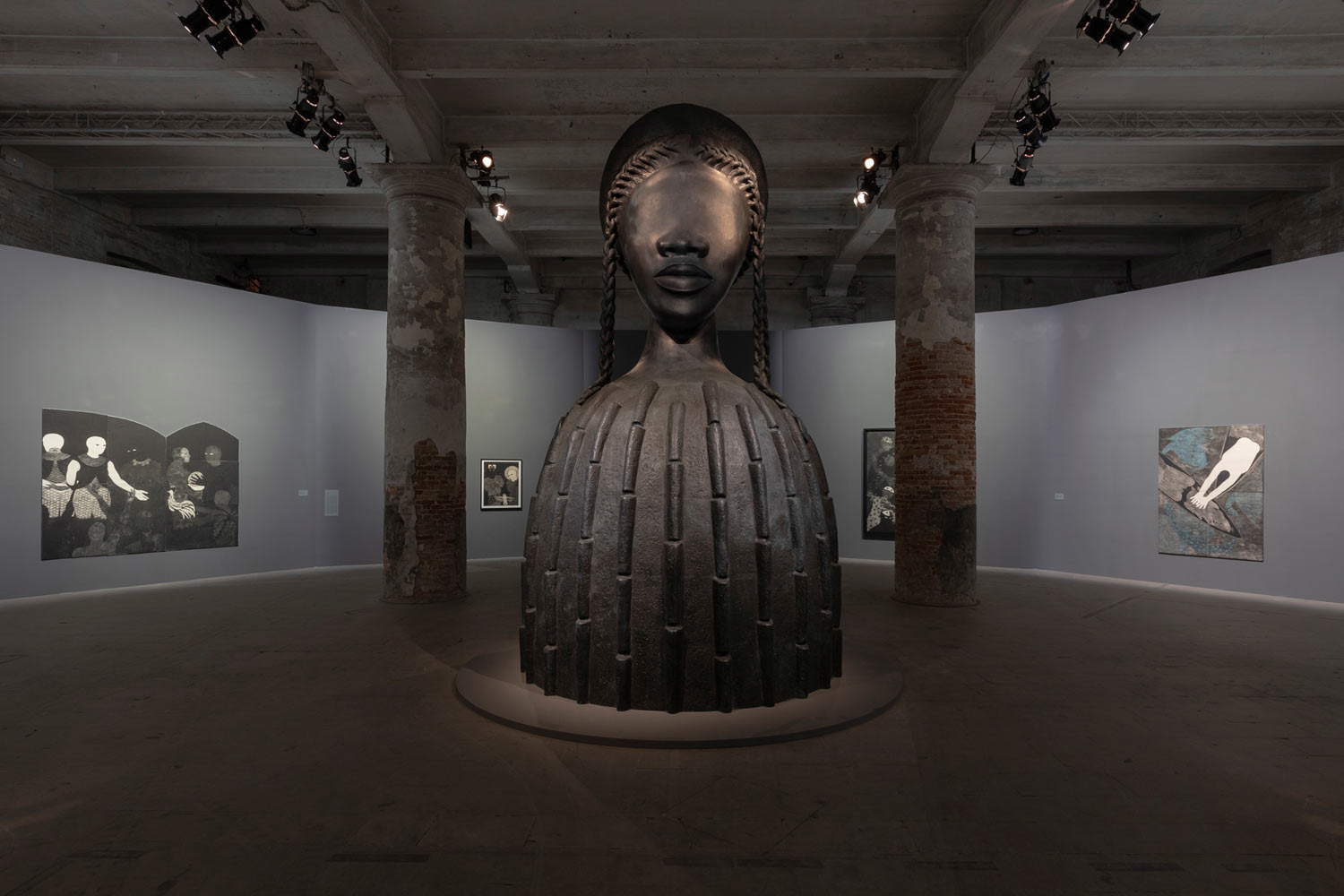
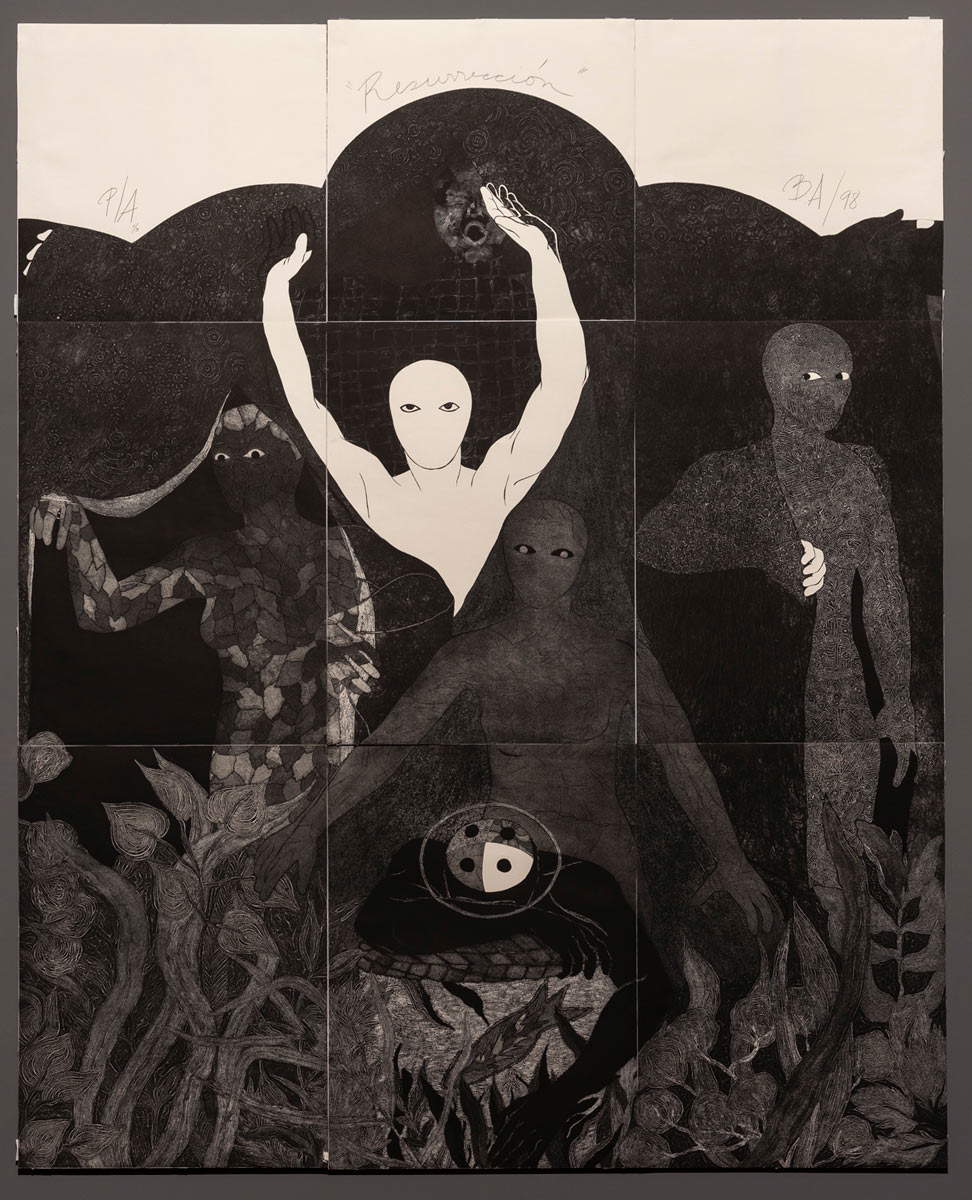
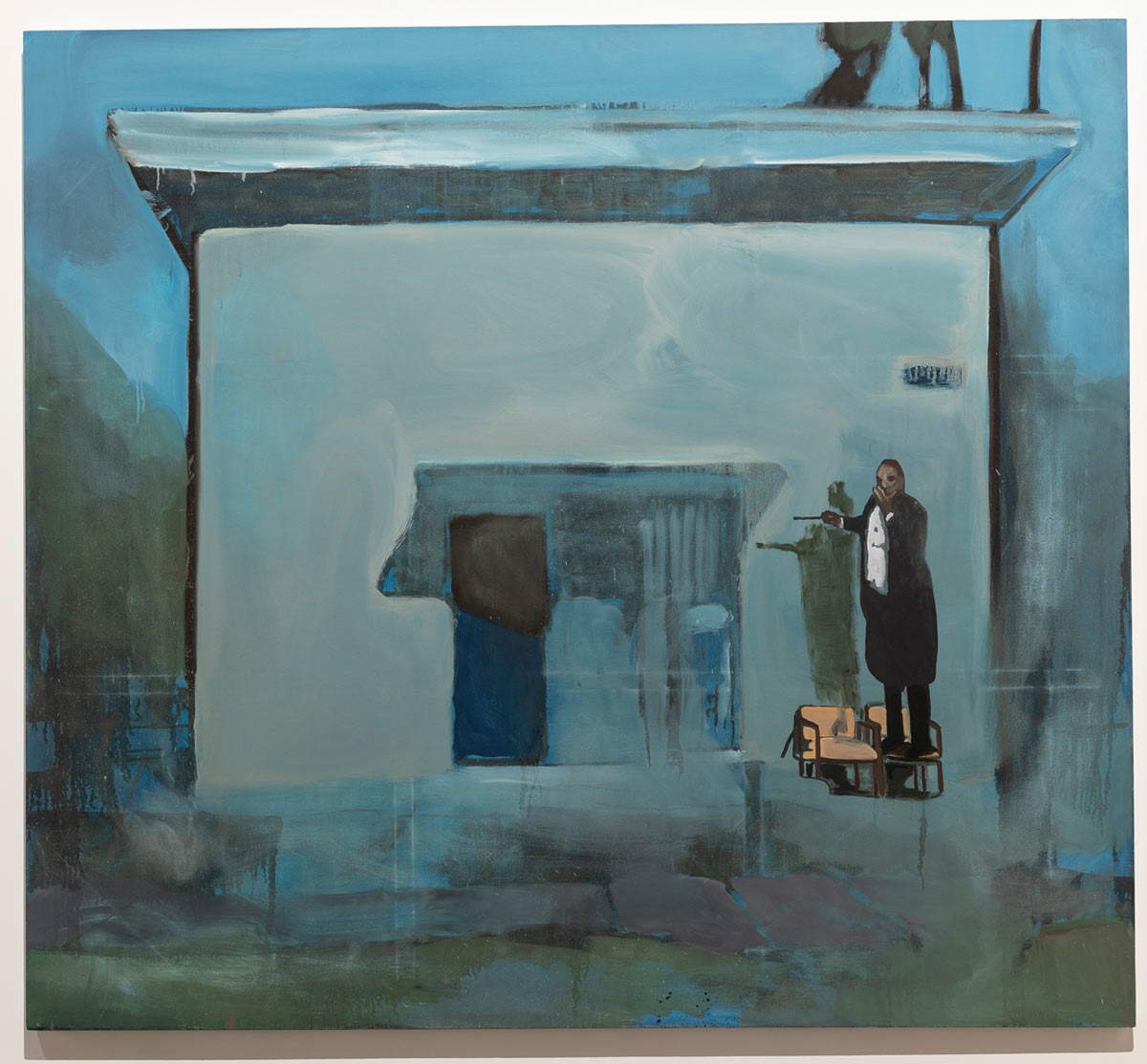
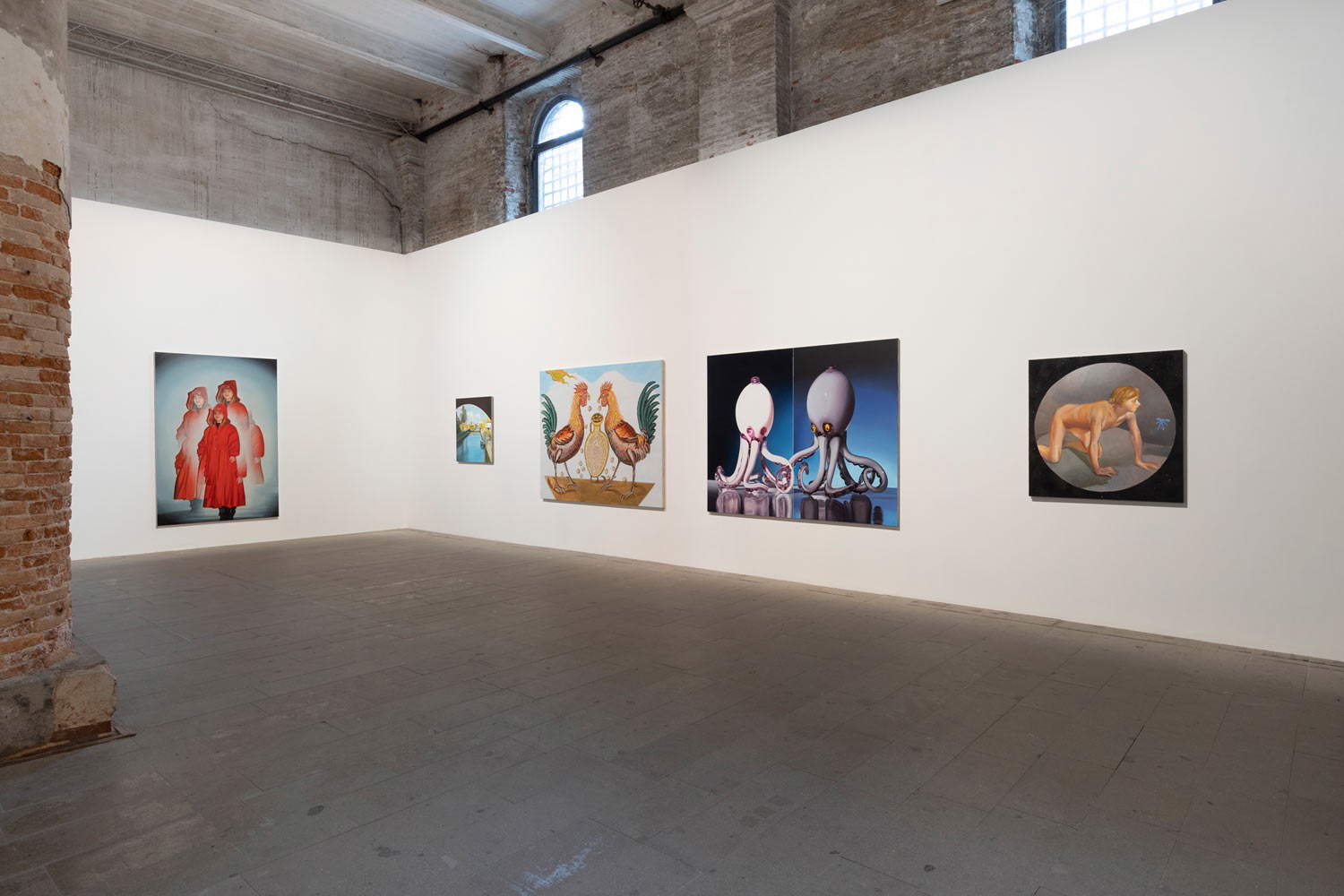

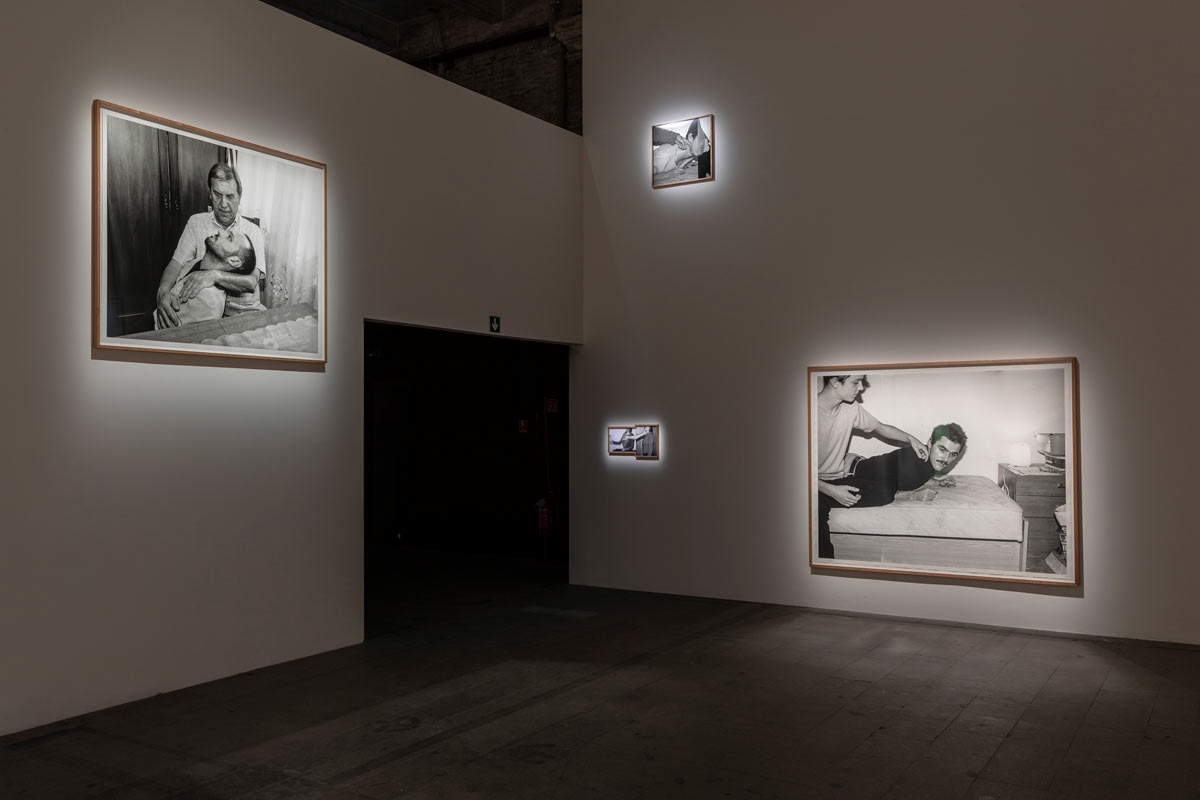
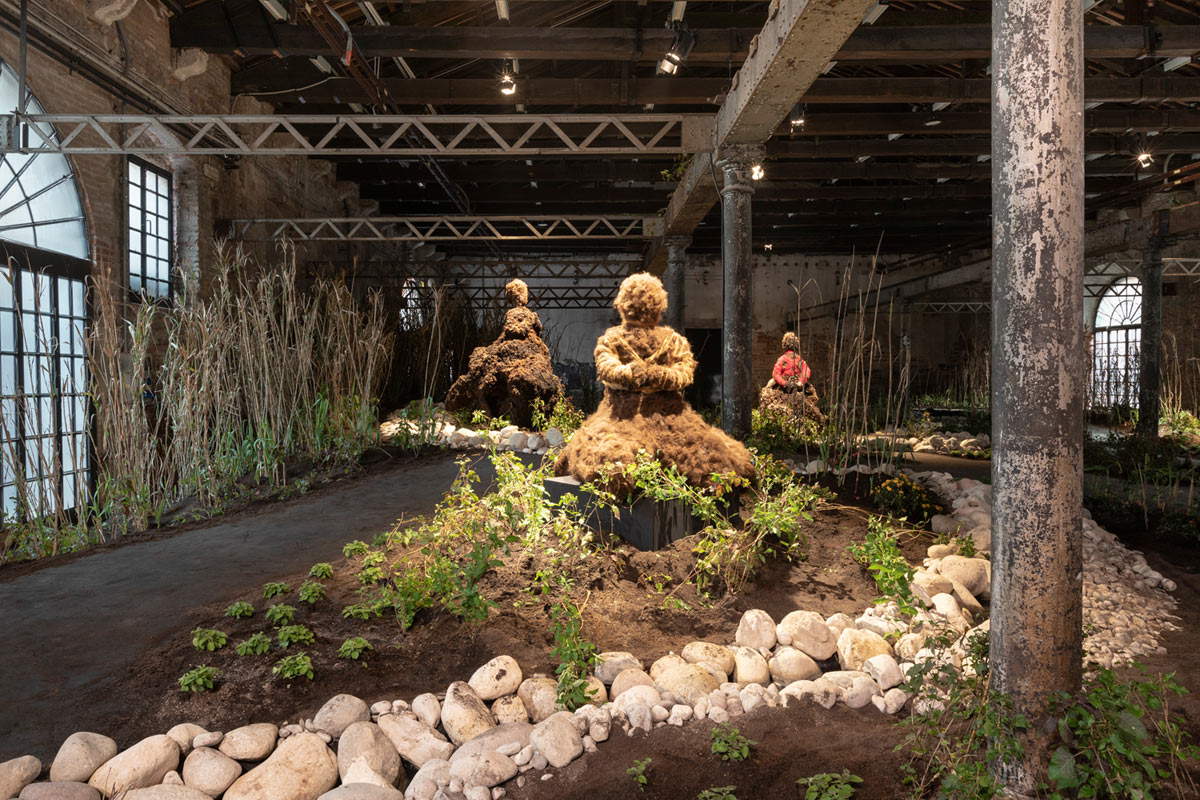
Revolt and revolutions that will certainly not find sprouts in a repetitive and passatist Biennial that, except for a few cues, almost never manages to break free from its accommodating conformity. Perhaps it is too optimistic to hope that The Milk of Dreams will direct us toward some form of action, but while it is true that a Venice Biennale should be a time to show the world the best of the last two years of the globe’s contemporary art scene, as well as a time to bring together artists who have some vision of the future, the exhibition in these respects proved to be lacking, flat, unimpressive and very unconcrete. Wanting to emphasize a positive aspect, it will be possible to say that the design disorder of the exhibition, the paucity of the curatorship that concerned the historical part (and not already, of course, the choice of the artists themselves, many of whom really lifted from an unjust oblivion, but the way in which the five mini-exhibitions were conceived and realized) and the weakness of the content with respect to the philosophical premises turn out to be partly counterbalanced by the dreamlike character that the journey designed by Cecilia Alemani takes on, which motivates the avowedly optimistic character of the review and is at least entirely consistent with the title. The artists of the Venice Biennale 2022 dream, they dream of a different and new humanity, and they know how to do it quite well, too.
Much more mundane, however, are the power logics that persist even in The Milk of Dreams: not to mention the fact that the neo-surrealism of which there are a variety of examples in the exhibition (from Louise Bonnet to Cecilia Vicuña, from Christina Quarles to Sheree Hovsepian, from Hannah Levy to Cosima von Bonin) is that which informs the trends of American taste today, it will be worth noting how, of the ten galleries from which at least three of the women artists exhibited along the course of this Venice Biennale’s international exhibition come, eight are run by males, seven of them white and Western. So fine is the Biennale against the white and Western male, but if that same white and Western male is still an expression of the dominant culture that runs the market within which most of the artists in the Biennale work and gain recognition, to what extent is there any congruence when we talk about the triumph of indigenous art, African art, and so on? And if that same Western (or more specifically Anglo-Saxon) white male senses that one can well profit even on guilt, does one not sense the slightest contradiction? The Biennale, it has been said, is not the place to question systems of power, and this year it is not even the place to think about different methods of distribution than the dominant ones, or different systems and mechanisms of recognition for women artists. In short, are we talking about another form of colonialism?
Warning: the translation into English of the original Italian article was created using automatic tools. We undertake to review all articles, but we do not guarantee the total absence of inaccuracies in the translation due to the program. You can find the original by clicking on the ITA button. If you find any mistake,please contact us.